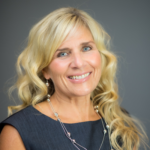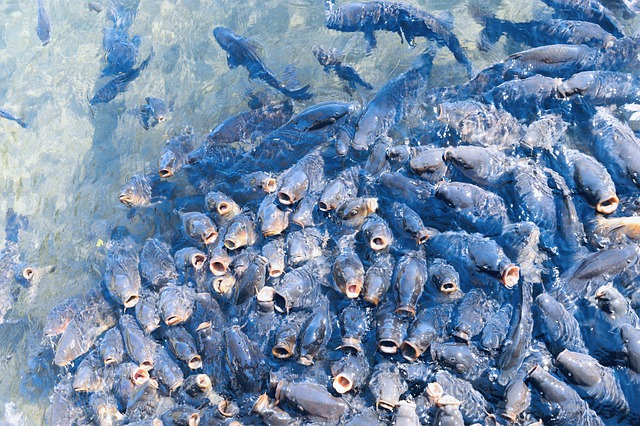June 3, 2022
By Michelle Pelletier Marshall, Global AgInvesting Media
As managing director of S2G Ventures’ Ocean and Seafood fund, Kate Danaher specializes in structuring capital, facilitating syndications, and providing comprehensive resources to enable businesses to scale while preserving their mission. Sounds like a tall order, no?
Not for Danaher whose vision is steadfast in believing that “business can catalyze the positive social and environmental shifts we need in this world but that the right capital partners and ecosystem are critical to their success.” This drives her ambition and role within S2G’s Ocean and Seafood fund, which was launched in August 2020 with the mission of committing $100 million to early, venture, and growth stage companies that are targeting innovations in that sector.
The company is well on its way to achieving that goal, having built their portfolio to span six companies across four countries, including participating in a Series B in 2021 that raised $39 million for Sofar Ocean, which produces marine sensing devices. Other S2G investments include ReelData, which provides AI for land-based aquaculture, and Moleaer, which harnesses the power of nanobubble technology.
And while aquaculture may not quite garner the attention that other ag sectors do – the meat industry, plant-based proteins, etc. – it is now increasingly on the radar of environmentalists (it is the most carbon-efficient source of animal protein) and investors alike (an untapped market). In fact, aquaculture production is projected to overtake capture fisheries in 2024 and be the main driver of growth in fish production at the world level, growing at a CAGR of 4.7 percent, earning revenue of $253.9 billion by the end of 2028.
GAI News caught up with Kate at her office in San Francisco to gain her insight into this fast-moving sector.
1). You’ve had a jump on understanding the intersection of impact investing and sustainable food and agriculture, which is a hot topic now, having worked in it for more than eight years. What is your take on how this will define the sector and investments in it going forward?
Many of of us, including S2G Ventures, have spent the past decade investing in the emerging sustainable food/ag sector. Investments today span across asset classes, from venture investments to private equity, and across sectors, from regional food systems to global ingredients. An important foundation has been laid in embedding sustainability objectives into investment these and underlying investments in this sector. This foundation sets the bar to make sustainability the default for future investments as this sector scales.
Our expectation is that these investments will have outsized financial and impact returns, demonstrating that a shift towards sustainable agriculture is not only possible but investable. AND, we are still in the early days, closely watching to see how many of these investments play out. The groundwork has been laid with sustainability as a common denominator so that as new entrants invest in the space and it continues to grow, the impact will scale as the capital scales, showing the world that this is an investable space.
This is exactly what we believe to be true for Oceans. Investing in the blue economy today is where food and ag investing was a decade ago. We are excited to be at the bleeding edge of an undercapitalized space that, with time, will also deliver outsized financial and impact returns.
2). In the grand scheme of feeding the world, aquaculture is a young industry, which has its advantages, such as with applying technologies. What do you see as the catalyst to move the sector forward where it is said that production will need to double by 2030 to meet demand?
Aquaculture has the great advantage of coming of age at a time when the agriculture sector is grappling with, and recalibrating in response to, the consequences of industrialized animal agriculture (CAFOS, antibiotics, etc.). Over the past decade, the adoption and implementation of technology has been key in advancing large-scale agriculture towards more sustainable practices. The aquaculture sector is much younger in its development than industrialized agriculture and the industry is benefitting from the learnings and recalibration of the ag sector. A part of that benefit is the emergence of relevant technologies in aquaculture coming to market faster. It’s like being the youngest kid in the family–you get to see all the mistakes and successes of your older siblings and integrate those observations from the start (as I know from personal experience being the oldest child).
But aquaculture, both ocean and land-based, still has its challenges. Replicating the natural environment to raise healthy fish is difficult and companies face serious obstacles when it comes to operating efficiencies and achieving viable margins. It also has outsized risks – one slight oversight in internal operations or an unexpected external variable can compromise an entire harvest cycle. At S2G, we believe that by investing in enabling technologies, such as Reel Data and Moleaer that are fine-tuning operations across the aquaculture sector, we can support the entire industry in becoming more viable.
3). You’re two years into managing S2G’s ocean and seafood business – how’s the progress?
It has been an exciting ride with a number of achievements that we’re proud of, and many lessons learned. One meaningful takeaway is that we are finding so many opportunities to invest globally as remarkable innovations are coming out of countries around the world. Something else that has become increasingly apparent is that the oceans investing space feels like it is at a stage that the agriculture sector was at 10 years ago or even where renewable energy was before that. S2G, along with a handful of emerging blue economy focused funds, are betting early on the space and expecting that investing here will become more mainstream in a handful of years. We have been encouraged to see the number of investable opportunities being met by an ever-increasing group of investors who see potential in the blue economy.
4). The majority of aquaculture enterprises are SMEs. How do you engage and ensure investors – private equity, venture capital, ag fund managers, etc. – are in support of these smaller companies?
It is early days here. With a $100M fund, S2G is not yet in a place to invest in aquaculture production assets (the actual farm), as an example, since those investments require much larger checks. But fortunately, we are seeing sizable investments from different asset classes supporting in the places we cannot. While there are still many more projects looking for capital than there is capital currently available, some of the more promising projects have found great partners.
5). Tell us more about the emergence of ocean-focused funds and the 1,000 Ocean Startups Coalition that S2G is involved with.
Five years ago, Aquaspark and Hatch were blazing a trail as the only oceans-focused fund. Today, there is a handful of very strong incubators and accelerators supporting the emergence of blue economy start-ups and another handful of ocean-focused funds closing their first investments, such as SWEN Blue Ocean Partners and Oceans 14 Capital. While these funds only represent around $1 billion in capital dedicated to the blue economy, the sector is shaping up to be a mighty one. There has been a great culture of collaboration with each fund bringing its own connections to co-investment opportunities, creating a network effect that will catalyze more capital into the sector.
Another promising sign is that pioneers such as Aquaspark and Hatch have had great mark-ups on their funds, indicating that oceans investments can perform, but there is still a lot of work to make that capital come full circle, and successful exits can still be several years out.
6). Where do aquaculture and cell-based options stand in the midst of securing sustainability? I just read an article about a study that indicated aquaculture consumes more fish than it produces… what has your research/experience shown with this?
Traditionally, the aquaculture industry does have a fish problem. Currently, a quarter of the world’s commercially caught fish are used for fishmeal, of which about 70 percent is directed towards aquaculture. But replacing wild fish stocks as a key feed ingredient has become a top priority for the aquaculture industry. In many cases, fish-based feed has been replaced with corn and soy-based products, but these cereals are not natural to a fish’s diet and don’t have the nutritional profile they need. There are also environmental issues associated with using these crops for fish feed, and they are generally considered suboptimal ingredients.
The good news is that there are many companies working on producing sustainable substitutes, such as insect protein, algae ingredients, and single-cell proteins from waste such as methane. While these opportunities are very promising, we will need to see prices go down for them to truly be economically viable solutions.
In terms of cellular seafood, entrepreneurs are making step-change discoveries that are lowering the cost of production and improving the sustainability of inputs. As we continue to refine the processes for cell-based seafood and aquaculture, these methods should allow us to sustainably produce more fish while reducing the pressure on wild populations.
7). Your company, S2G Ventures, just released the report “8 Trends Critical to a Vibrant Blue Economy”. Please share with us the top three findings of the trends that are fueling the transition to a healthier ocean ecosystem and more sustainable seafood supply chain.
One trend that is very central to progressing the blue economy is the utilization of ocean data to unlock understanding, solutions, and efficiencies for a broad range of stakeholders. Technological advancements are enabling companies to capture, store, transmit, and analyze data from the ocean more efficiently, accurately, and frequently than ever thought possible. The increase in data capture and analysis will enable scientists to better understand how the ocean is changing and enable governments to monitor adherence to fishing regulations. It also will support better weather models and more efficient navigation for the shipping industry. With near limitless applications, ocean observation is poised for explosive growth.
Another trend on the customer side is that cell-cultivated seafood will be publicly available in the next 18 months. Global seafood consumption is projected to increase by nearly 80 percent by 2025, yet wild fish stocks continue to decline, and traditional aquaculture is near capacity. Entrepreneurs working in cell cultivated seafood are constantly making discoveries that are lowering the cost of production and positioning cell cultivated seafood as a sustainable and increasingly affordable protein option that delivers similar taste, feel and nutrition profiles to wild-caught or farmed seafood.
Lastly, we believe regenerative ocean farming, the practice of growing seaweed and shellfish in underwater coastal gardens, will become economically viable in the near future. Regenerative ocean farming has been gaining momentum as a way of meeting growing seafood demand while supporting healthy ocean ecosystems, but early efforts were prompted mostly by environmental benefits. Today ocean farmers have years of experience to glean from and are poised to bring real, scalable solutions to market that will offer environmental and economic returns to farmers, suppliers, and consumers.
ABOUT KATE DANABAR
 Kate Danaher is managing director with S2G Ventures’ Ocean and Seafood fund. She has worked at the intersection of impact investing and sustainable food and agriculture for over eight years. Prior to joining S2G Ventures, Danaher was the chief lending officer at RSF Social Finance, where she oversaw the capital deployment strategy to evaluate products, investment sectors, and growth objectives in alignment with the organization’s strategic plan. She is a food and agriculture finance expert who has specialized in the U.S. food system, fair trade supply chains, and consumer-facing brands. Danaher received her MBA through the Global Social and Sustainable Enterprise program at Colorado State University.
Kate Danaher is managing director with S2G Ventures’ Ocean and Seafood fund. She has worked at the intersection of impact investing and sustainable food and agriculture for over eight years. Prior to joining S2G Ventures, Danaher was the chief lending officer at RSF Social Finance, where she oversaw the capital deployment strategy to evaluate products, investment sectors, and growth objectives in alignment with the organization’s strategic plan. She is a food and agriculture finance expert who has specialized in the U.S. food system, fair trade supply chains, and consumer-facing brands. Danaher received her MBA through the Global Social and Sustainable Enterprise program at Colorado State University.
*The content put forth by GAI News and its parent company HighQuest Partners is intended to be used and must be used for informational purposes only. All information or other material herein is not to be construed as legal, tax, investment, financial, or other advice. GAI and HighQuest Partners are not a fiduciary in any manner, and the reader assumes the sole responsibility of evaluating the merits and risks associated with the use of any information or other content on this site.
 – Michelle Pelletier Marshall is contributing editor and author for HighQuest Partners’ GAI News and Unconventional Ag, and managing editor for its WIA Today blog. Additionally, she is the company’s Senior PR/Media Manager. She can be reached at marshall@highquestpartners.com.
– Michelle Pelletier Marshall is contributing editor and author for HighQuest Partners’ GAI News and Unconventional Ag, and managing editor for its WIA Today blog. Additionally, she is the company’s Senior PR/Media Manager. She can be reached at marshall@highquestpartners.com.

Let GAI News inform your engagement in the agriculture sector.
GAI News provides crucial and timely news and insight to help you stay ahead of critical agricultural trends through free delivery of two weekly newsletters, Ag Investing Weekly and AgTech Intel.




